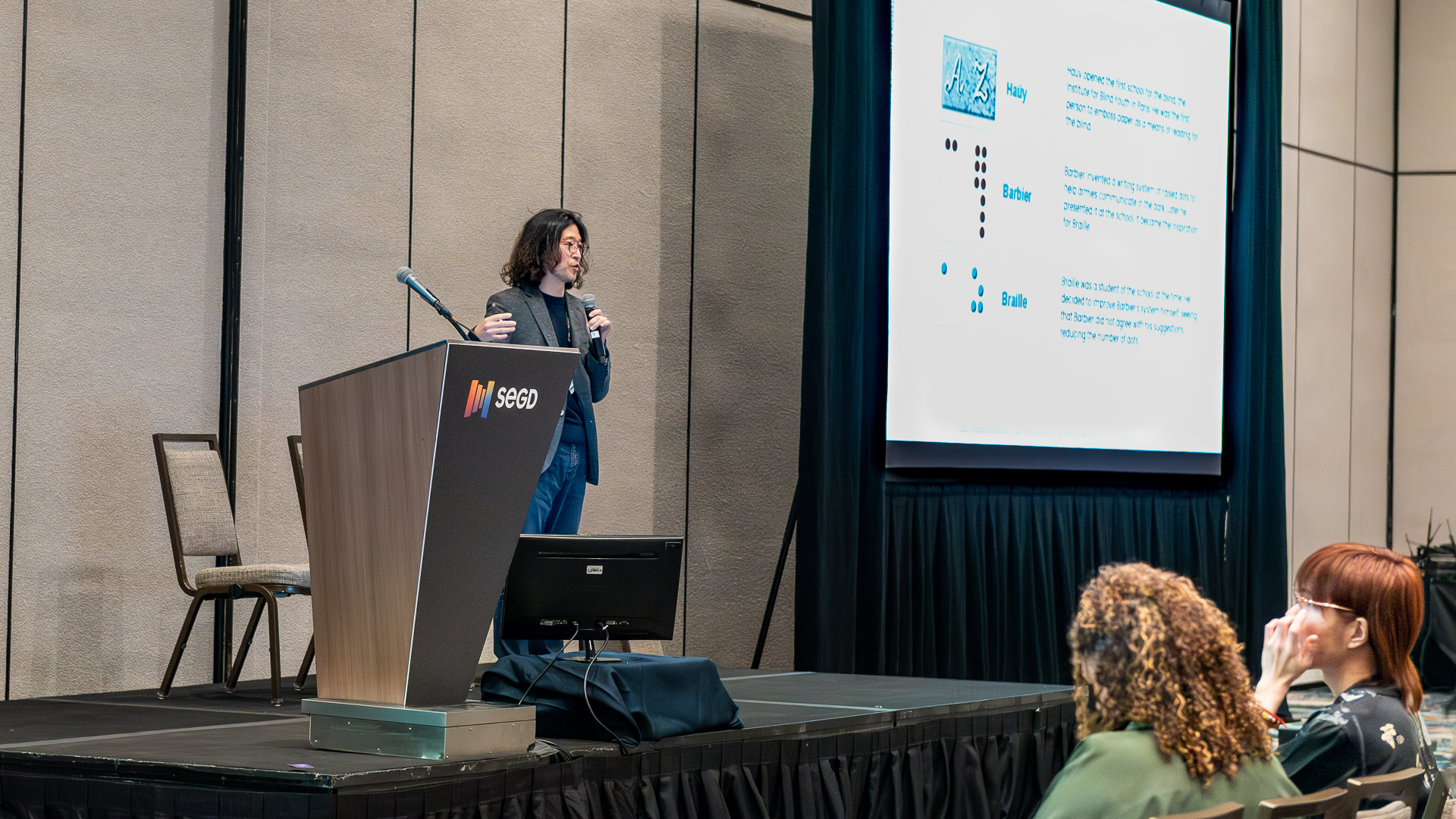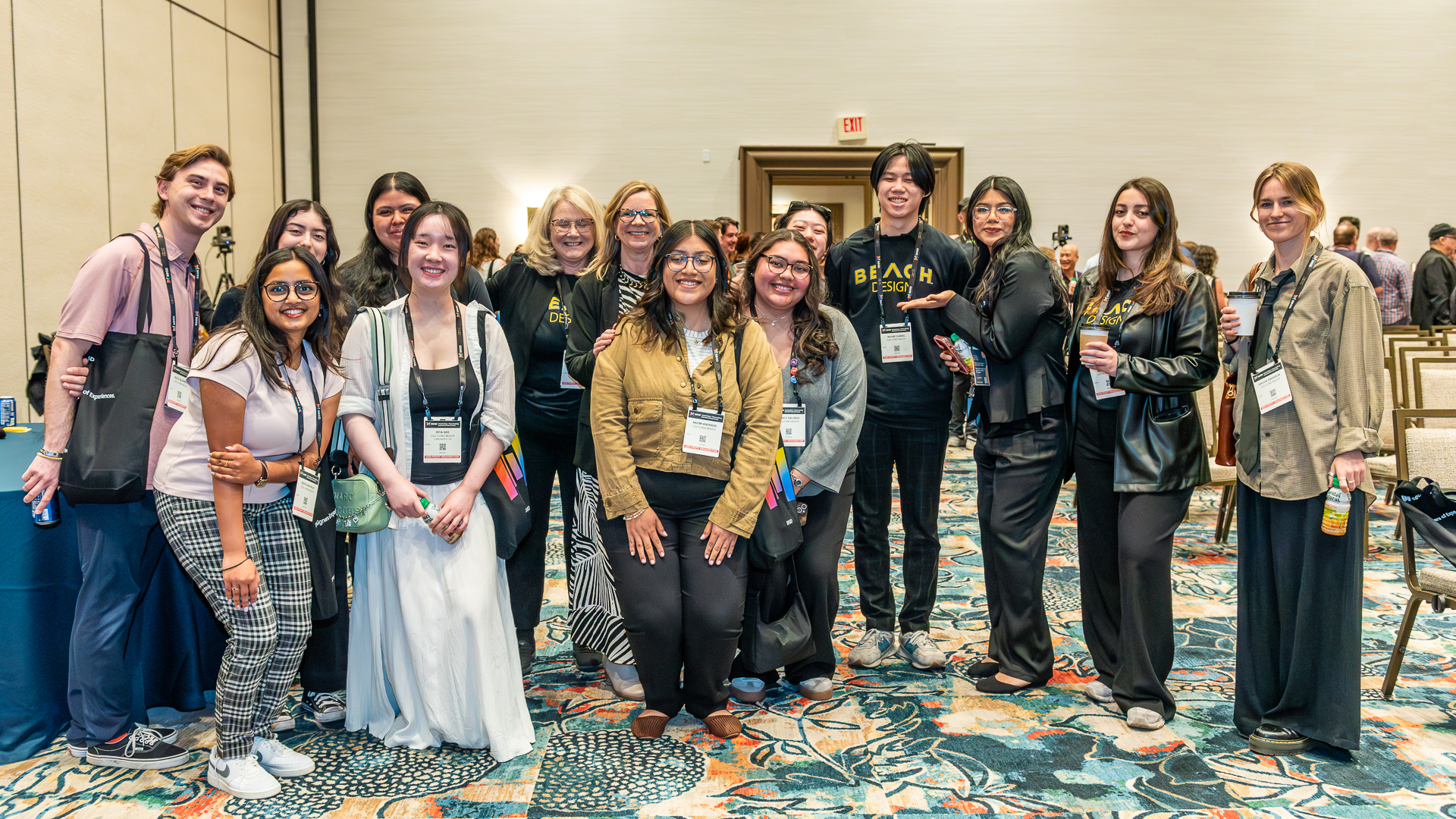Vegas Paradox: Between Audacious Spectacle and Rigorous Empathy in Experiential Design
2025 SEGD Wayfinding + Placemaking and Branded Environments Recap
Las Vegas. A city synonymous with audacious spectacle—a playground where the boundaries of the imaginable are routinely pushed. It’s a place that unapologetically embraces the big, the bold, the unexpected—a fertile ground for creative exploration, precisely because its inherent theatricality grants a unique license for experimentation.
Yet, within this landscape of dazzling excess, the two-day SEGD Wayfinding + Placemaking and Branded Environments event, April 23-24, unearthed a compelling tension: the critical need for a rigorous design process rooted in empathy and human-centered principles.
This wasn’t a dismissal of spectacle but an interrogation of its purpose. When does the pursuit of “wow” become an exercise in sensory overload, and when does it genuinely ignite joy and curiosity—inviting us to lean into the desires the design ultimately serves? Whether reimagining a casino floor, breathing new life into a defunct shopping mall, or optimizing a bustling transit hub, the underlying question remained: whose experience are we truly elevating, and how do we ensure our design processes reflect the needs, functions, and perspectives of all users?
Whose Experience Are We Designing For?
This year’s gathering wasn’t afraid to get uncomfortable, challenging attendees to consider the often-unseen inhabitants of our designed spaces. The notion of engaging unhoused individuals in the placemaking process for public park renovations sparked vital conversations about whose voices shape our environments—and how we can actively curate welcoming practices.
Moreover, the complex challenges of creating truly bespoke, beautiful, and effective experiential design demand a collaborative approach. This willingness to give and take—moving beyond a “whack-a-mole” mentality toward a nuanced understanding of team dynamics—is crucial for developing innovative solutions that foster respect among different disciplines and elevate productivity.
The event became a two-way conversation, with attendees engaging in a “speed storming” exercise to improve future SEGD gatherings. This meta-level examination underscored a core principle: the desires and needs of the audience must be the compass guiding our design experiences—even at our own events.
What Emerged: Values, Empathy, and Purposeful Impact
Across the dynamic dialogues and collaborative energy of the 2025 SEGD Wayfinding + Placemaking and Branded Environments event, several core themes emerged as pivotal for the future of wayfinding, placemaking, and branded environments:
Value-Driven Design for Authentic Connection
The conference stressed the importance of anchoring design in genuine values—moving beyond surface aesthetics to craft branded environments and public spaces that truly embody core beliefs and cultivate a strong sense of belonging.
Shaping Inclusive Standards Through Collaborative Expertise
SEGD’s community has a vital responsibility in developing inclusive wayfinding and signage standards through collective research and multidisciplinary collaboration. To meet complex accessibility requirements, we prioritize active listening and diverse viewpoints.
Intentional Spectacle for Meaningful Engagement
Discussions emphasized the necessity of intentionality when utilizing spectacle—ensuring it serves a clear purpose, such as evoking joy or curiosity, rather than functioning as a superficial display detached from human-centered design principles.
Designing for Ritual and Wellbeing
Beyond immediate impact, the event highlighted the power of strategically designing for ritual within spaces—embedding opportunities for pause and meaningful interaction that foster collaboration, healthy behaviors, and deeper connections to place and brand.
A Community Rooted in Shared Purpose
In a city that thrives on pushing boundaries, SEGD’s 2025 event in Las Vegas wasn’t just about showcasing best practices; it was about wrestling with our field’s inherent contradictions. It was a call to navigate the thrilling potential of spectacle with the unwavering responsibility of human-centered design—proving that even in the most extravagant of settings, genuine impact lies in the rigor of our process, the depth of our empathy, and the power of our collective expertise.
Beyond the valuable insights and critical discussions, the enduring spirit of collaboration and shared passion reaffirmed the intrinsic value of this community gathering. It reminded us of the profound strength found in shared purpose—and the bonds that unite us in shaping more meaningful and equitable experiences.
With Gratitude
This event would not have been possible without the generous contributions of our speakers, moderators, and volunteers—each of whom brought their time, insight, and energy to the table.
We are deeply grateful to our Industry Partners and event sponsors for their continued support and investment in the SEGD community. Thank you to our Presenting Sponsor for Wayfinding + Placemaking and Branded Environments, Color-Ad Signs and Exhibits, as well as our sponsors Archetype, CRĒO Industrial Arts, Design Communications Ltd (DCL), MOSS, Nanolumens, Nova Polymers, Peregrine OKB, SignAgent, SNA Displays, and Thought Process. Also, a special thank you to our SEGD Industry Partners and SEGD 50th Foundation.
A special thank-you to the International Sign Association (ISA) for their collaboration and partnership in hosting this event alongside the ISA International Sign Expo. Together, we created a space celebrating innovation and inclusivity in experiential design.
Finally, a massive shout-out to our fantastic Event Co-Chairs, Emily Payne and Jonny Peterson, and to our on-site volunteers—Kris Helmick, Sean Puzzo, Amy Rees, and Carissa Salazar—for making it all run smoothly.
People also viewed
-
The Rise of Resolution: Avoiding the Slippery Slope to a Techno-Immersive Future

The Rise of Resolution: Avoiding the Slippery Slope to a Techno-Immersive Future
-
Opulence: Immersive Art at The Cosmopolitan of Las Vegas

Opulence: Immersive Art at The Cosmopolitan of Las Vegas
-
Lavender Hill: Placemaking as Community Building in Denver’s Queer Cultural District

Lavender Hill: Placemaking as Community Building in Denver’s Queer Cultural District









